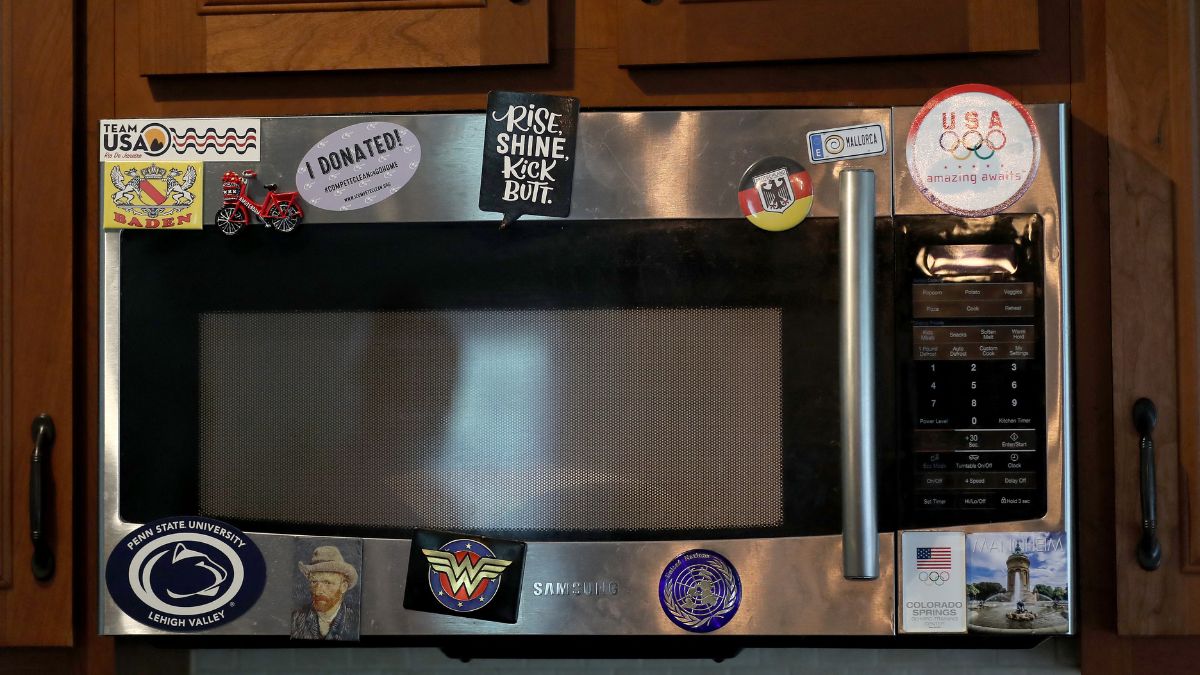We can’t see microbes, but they’re everywhere—yes, even in places we’d never expect. You might think your microwave is a clean sanctuary for your meals, but a recent study has thrown that idea out the window. Researchers from Spain, whose findings were published in Frontiers in Microbiology , investigated microwaves from homes, offices, and even laboratories.
Their research uncovered a hidden world of bacteria, with each environment hosting its own unique microbiome. These resilient microbes have adapted to the microwave’s extreme temperature fluctuations, radiation, and dryness, challenging the common belief that microwaves are bacteria-proof. “Our results reveal that domestic microwaves have a more ‘anthropized’ microbiome, similar to kitchen surfaces, while laboratory microwaves harbour bacteria that are more resistant to radiation,” said Daniel Torrent, one of the study’s authors and a researcher at Darwin Bioprospecting Excellence SL in Paterna, Spain.

So, does this germ-friendly environment mean your microwave could be a hidden health risk? Let’s explore the potential dangers and discover how to keep your microwave—and your meals—safe. The study Microbes have adapted to thrive in a range of human-made environments, from marine oil spills to industrial brownfields and even inside the International Space Station. In this study, the team was particularly interested in the presence of bacteria in the hot microwave setting.
Researchers collected microbiological samples from 30 microwaves: 10 from private homes, 10 from shared communal spaces like offices and cafeterias, and 10 from research laboratories. To uncover the diversity of microbes, the team used both advanced genetic sequencing and traditional culturing techniques to examine 101 strains across five nutrient conditions. The findings revealed a surprising array of bacteria within the microwaves, though some types were more common than others.
In total, the researchers identified 747 different bacterial genera. Among these, Firmicutes, Actinobacteria, and Proteobacteria were the most prevalent, with Proteobacteria being the most abundant. “You don’t need to go to very exotic — geographically speaking — places to find diversity of microorganisms,” Manuel Porcar, a co-author of the study and microbiologist at the University of Valencia told Nature Notably, microwaves in domestic and shared settings harboured similar bacteria, often resembling those found on human hands and other kitchen surfaces.
This suggests that microbes may not require special adaptations to survive in microwaves, possibly because food particles offer some protection from radiation, according to Porcar. In contrast, bacteria from laboratory microwaves, where food was not cooked, were more distinct and resembled those found in other extreme, dry, hot, and irradiated environments, like on solar panels. The study also highlighted that some bacteria found in domestic microwaves, such as Klebsiella, Enterococcus, and Aeromonas, could potentially pose health risks to humans.
What are the health risks? According to the US Centres for Disease Control, Klebsiella is a type of bacteria that can cause healthcare-associated infections (HAIs), including pneumonia, bloodstream infections, wound or surgical site infections and meningitis. Whereas, Enterococcus, according to a study published in the US National Library of Medicine_,_ has the potential to cause a range of illnesses including urinary tract infections, bloodstream infections, and wound infections. Meanwhile, Aeromonas, an anaerobic, rod-shaped bacteria, have been linked to gastrointestinal infections, kidney disease, cellulitis, and meningitis.
Belinda Ferrari, a microbiologist at the University of New South Wales in Australia, found the discovery of these extremophiles in microwaves unsurprising. She told New Scientist , “They can adapt to everything,” given their ability to thrive in “almost any extreme-exposure environment.” The study also showed that microbial diversity in microwaves is similar to that on typical kitchen surfaces.
This suggests that the thermal shock, electromagnetic radiation, and dryness in microwaves don’t significantly impact these resilient microbes. “What is clear is that one cannot trust a microwave to be a cleaner environment in terms of microorganisms compared to another kitchen surface. They must be cleaned like the rest of the kitchen,” said Porcar.
How to stay safe? Daniel Torrent, a researcher at Darwin Bioprospecting Excellence SL said, “For both the general public and laboratory personnel, we recommend regularly disinfecting microwaves with a diluted bleach solution or a commercially available disinfectant spray.” He further emphasised, “It is also important to wipe down the interior surfaces with a damp cloth after each use to remove any residue and to clean up spills immediately to prevent the growth of bacteria.” With input from agencies.



















